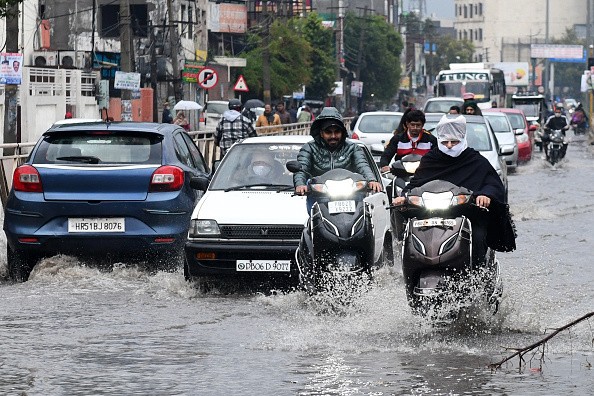Winter storms expected to bring snow and ice to the central and eastern United States this week will also deliver rounds of heavy rain and dramatically boost the risk of flooding in parts of the Ohio, Tennessee, and Mississippi valleys, according to AccuWeather meteorologists.
Over a dozen states had flood warnings and advisories from the National Weather Service as of Tuesday morning, when the first of two storms began to dump rain on parts of the central and eastern United States.

Rainfall Due to the Storms
Adam Douty, AccuWeather's Senior Meteorologist, said that a general 2-4 inches of rain is anticipated to fall from Louisiana to part of southwestern Pennsylvania during the initial storm that will end up in midweek. This storm is capable of producing an AccuWeather Local StormMaxTM of 6 inches on its own.
While this amount of rain is certainly heavy enough to produce minor difficulties like street flooding and high water along tiny streams, it is not usually substantial enough to cause more catastrophic widespread flooding, as per AccuWeather.
In this case, things are a little different. There was a recent storm that dumped up to four inches of rain in some areas. Because of the low evaporation rates and runoff from melting snow in some locations, streams and rivers in parts of Ohio, Indiana, Illinois, Pennsylvania, Kentucky, and New York have already burst their banks this past weekend.
Also Read : Storm Alert: Tropical Cyclone Emnati Threatens Madagascar with Heavy Rain, Flooding, and Landslides
Areas Prone to Flooding
An additional round of rain is forecast for Thursday and Friday, and part of it will fall on places already soaked by the first storm and the showers of last week. Some areas may have more than two inches of rain, but the total may be as high as six inches.
This week's two storms are expected to bring rainfall totals between 4 and 8 inches, with the possibility of 10 inches in some regions, according to Douty.
With so much rain falling over a three- to four-day period, minor streams and low-lying areas can easily be flooded, and some of the larger rivers in the region may see flooding in susceptible places, according to MSN.
On Wednesday, river level gauges in Kentucky, Indiana, and Ohio were already at the minor flood stage, with some predicted to reach the moderate flood stage later this week. According to the National Weather Service, certain areas of the Kentucky River will see minor flooding.
The area from northern Louisiana to southern Pennsylvania, which includes much of Arkansas, Kentucky, Tennessee, and West Virginia, is expected to be the most vulnerable to floods.
Additionally, areas in northern Mississippi and Alabama, southeastern Ohio, southern Illinois and Indiana, and western portions of both Virginia and North Carolina are all at risk of flooding.
The Second Storm May Bring Snow to Some Areas
Nashville, Tennessee; Paducah, Kentucky; Little Rock, Arkansas; and Charleston, West Virginia are among the major metro areas expected to experience severe rain from both storms this week. Some of these cities, too, were drenched by the recent storm.
The storm that hit Nashville on Feb. 17 dumped more than 3 inches of rain on Paducah the following week.
Even though minor streams and city streets can rise quickly during a rainstorm, larger rivers may take many days to do so. Dam mitigation may be able to absorb some of the high water and limit issues further downstream on some waterways.
The first storm and subsequent runoff from last week's storm will be the primary cause of flooding in northern portions of northern New York, Vermont, and New Hampshire. Runoff and stream and river levels should stabilize later this week as colder weather pushes in and dumps a lot of snow in this area and the northern Ohio Valley from the second storm.
Despite the possibility of a third storm slicing through the southern United States this weekend, the intensity of the rain is not expected to considerably worsen flooding, and much of that rain is projected to fall south of the hardest-hit rainfall zones from this week.
Related Article : Cross-Country Twin Storms to Unleash Ice and Snow in Central, Eastern US
For more news updates about storms and similar topics don't forget to follow Nature World News!
© 2026 NatureWorldNews.com All rights reserved. Do not reproduce without permission.





